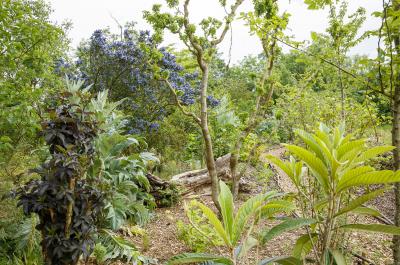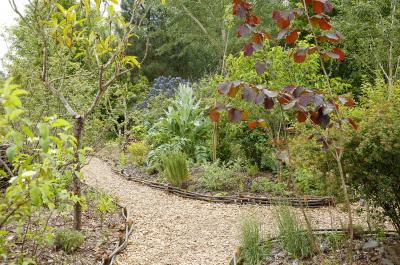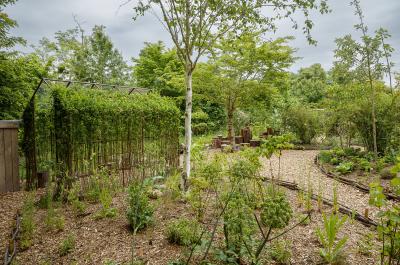Prés du Goualoup
28. Le jardin des bonnes pratiques
The garden of good practice
published at 15/02/2024

Conscious of the educational aspect of an event such as the International Garden Festival, the Domain of Chaumont-sur-Loire has brought together all the environmentally-friendly techniques that people of all ages should adopt in one garden, the Jardin de bonnes pratique (The garden of good practice).
– Agroforestry makes good use of the interactions between trees and crops to make better use of the environment’s natural resources. Trees promote an increase in biodiversity and wildlife, and improve the organic matter and water content of the soil.
– Green manure (spinach, mustard, fava beans, etc.) increases the productivity of partner crops and is a free and effective fertiliser.
– Hedges around fields and copses are a collection of plants of varying species and ages that combine a mix of shapes, colours and scents. They provide a home or cover for a wide variety of animals, act as an effective windbreak and provide protection from bad weather as well as from prying eyes.
– Plant-derived liquid manures (from comfrey, ivy, nettles, horsetails, etc.) are the basis for natural pesticides and a very effective fertiliser for the garden. They strengthen plants and repel pests.
– Mulching prevents weeds from growing and the rain from compacting the earth while keeping moisture in the soil and allowing earthworms to feed.
– Earthworms are among the gardener’s best friends because they eat waste material and turn it into soil. Vermicompost is a fertiliser and a soil improver.
- Pollarded trees are topped at a low height so that they produce a sort of aerial coppice that is easily accessible. Pruning the trees in this way gives them an exceptionally long lifespan and makes maximum use of their capacity for regeneration.
Design: Chantal Colleu-Dumond and Bernard Chapuis
Realization: gardeners of the Domain of Chaumont-sur-Loire


